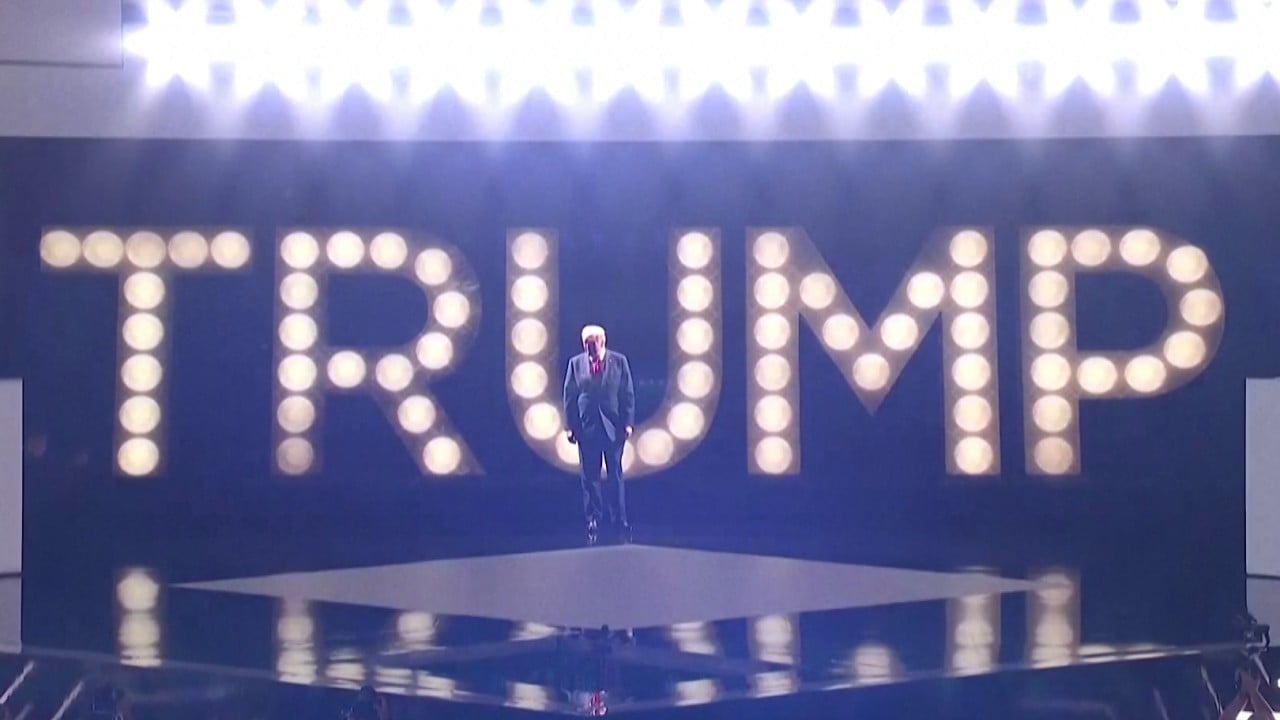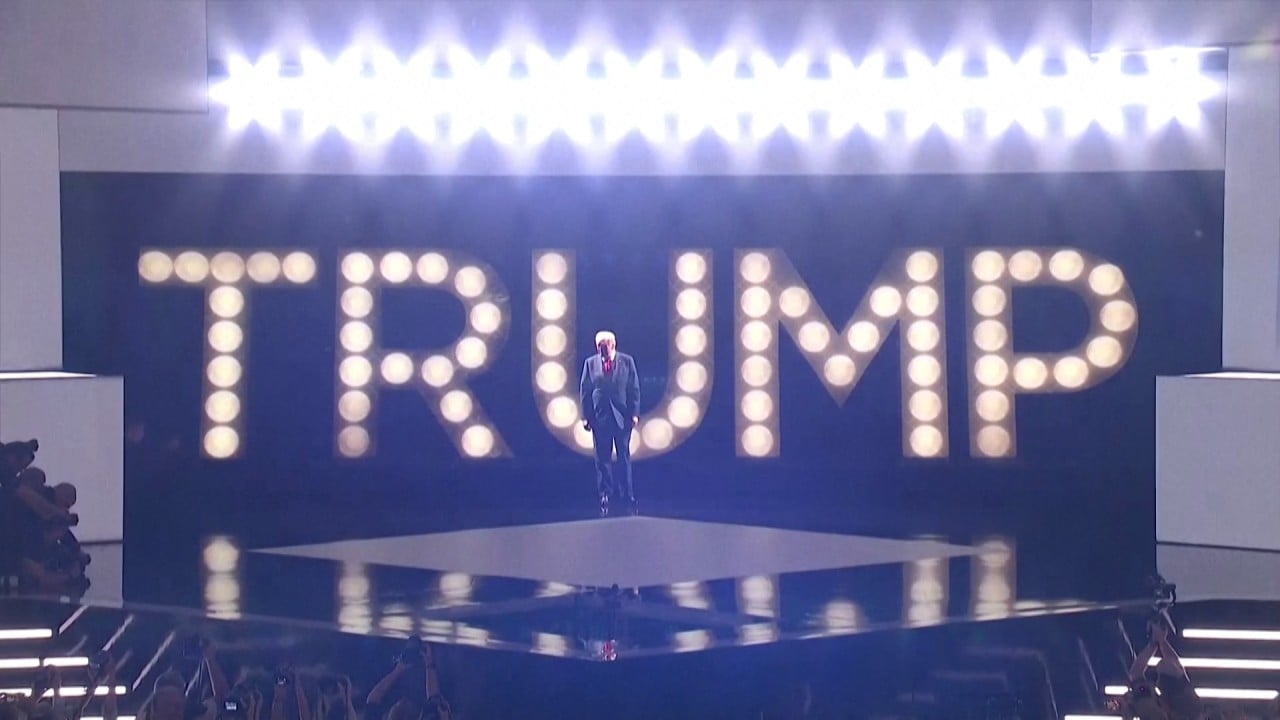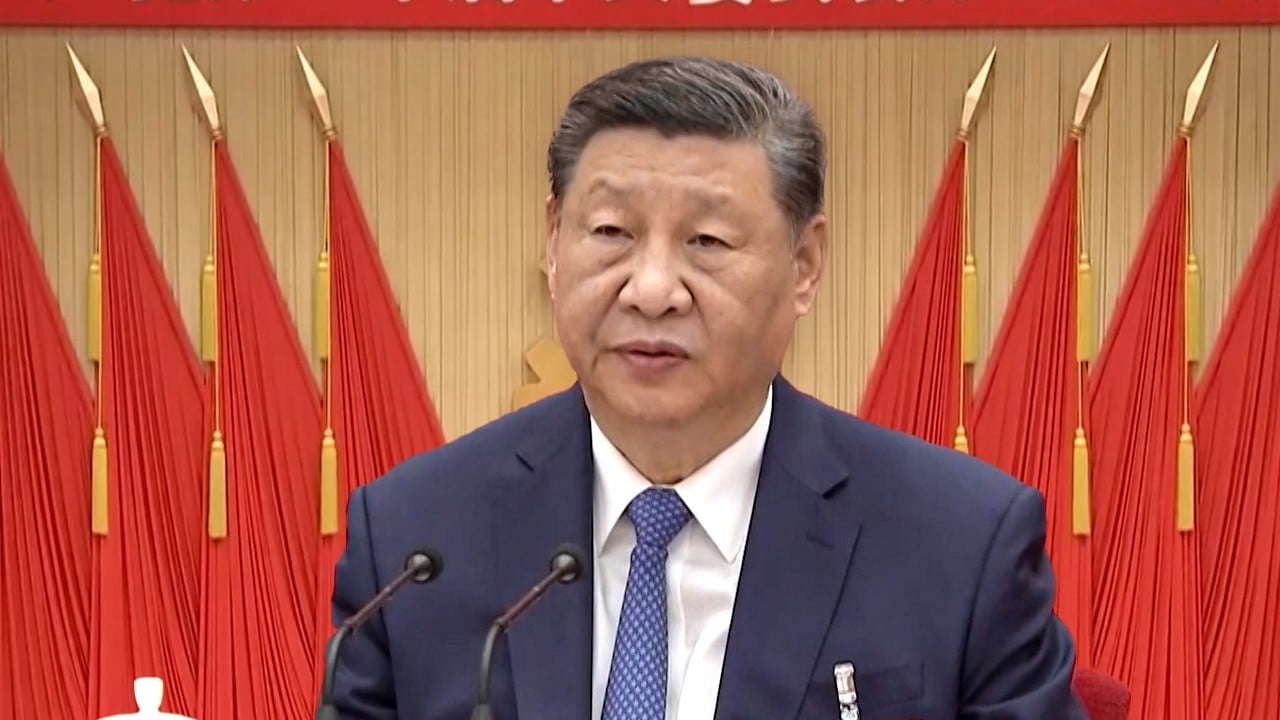A Trump 2.0 administration is sure to mean a more protective and populist America but there may still be room for the US and China to address their trade dispute, analysts said.
Accepting the Republican Party nomination for the US presidential election on Thursday, Donald Trump vowed to reshore car manufacturing and put tariffs of up to 200 per cent on each imported vehicle.
He said he would reverse President Joe Biden’s support for electric vehicles, saying they were “green new scams”.
The speech to the party’s national convention was his first since surviving an assassination attempt over the weekend and included a call for unity and protection of the US, which he said had “long been taken advantage of” by countries like China.
Zhu Feng, an international relations professor at Nanjing University, said Trump had been expected to to push for tougher trade policies on China, given the US’ increasingly “America-centric” and “inward looking” ideology.
To cope with it, China had to show “strategic resilience”, he said.
“America is no longer the America we are familiar with. It may even lead to the collapse and end of globalisation,” Zhu said.
“So we have to see how China and the United States are each changing and adjusting, especially how China can adapt and respond to a changing US and world with strategic resilience.”
The way to strengthen that resilience was through further reform and opening up, he said, referring to a central theme at the Communist Party’s third plenum this week.
The twice-a-decade gathering ended on Thursday with the party’s leadership vowing to step up reform efforts amid domestic and international challenges – from a patchy economic recovery to US restrictions on China.
Lu Xiang, a US-China relations expert at the Chinese Academy of Social Sciences, said Trump’s targeting of particular industries such as the EVs would have a limited impact on China, given the US was such a small market for Chinese electric car manufacturers.
The US already has a 100 per cent tariffs on Chinese EVs, importing just 12,400 of the vehicles last year – a fraction of the 1.7 million China sold around the globe during the same period, according to Chinese government data.
Chinese EV companies have moved some manufacturing to Mexico to avoid those tariffs, but Trump said he planned to stop these vehicles flowing in America.
Lu said Trump might target certain products to express his position but applying tariffs to all Chinese products would be counterproductive.
“I think raising universal tariffs would be incompatible with his promotion of inflation reduction,” Lu said, adding that it would also be difficult to implement.
China says tariffs would increase costs for American consumers and worsen inflation in the US.
Lu said Trump also appeared more “cautious” and “measured” in his acceptance speech this time than eight years ago, and the possibility of a more rational approach to policy could give China and the US room to address their trade disputes.
One place to start could be to revive a 2020 deal requiring Beijing to buy an additional US$200 billion of American goods and services in a two-year period. Beijing missed the target as supply chain disruptions during the Covid-19 pandemic dealt a blow to imports.
It was known as the Phase 1 trade agreement, one Trump said on Thursday was “the best trade deal” he made.
Lu said that despite his fierce rhetoric, Trump was able to reach the agreement with China.
“Biden has not reached any decent agreement with China in four years. So I think we can still expect both sides to have a reset on this agreement, to figure out how to follow up on it and settle other disputes,” Lu said.
He said China had no illusion that the US would take a positive policy approach towards China, but it was “not hopeless” to think that a new Trump administration could make adjustments in its China policy.
One of the high-profile figures in a Republican administration would be Trump’s running mate J.D. Vance, known for his hawkish stand on China. Vance supports tougher trade measures on China and a refocus of US foreign policy on China and Asia, including preventing an attack by Beijing on Taiwan.
Beijing sees Taiwan as part of China to be reunited by force if necessary, and most countries do not recognise Taiwan as an independent state. These include the United States, though it is opposed to any forcible change to the status quo and is bound by law to provide arms to Taiwan for its defence.
Trump is on the record as wanting the island to pay the US for its defence. On Thursday he added there was “a growing spectre of conflict” hanging over Taiwan and “all of Asia”.
Shi Yinhong, an international relations professor at Renmin University, said he expected Trump’s foreign policy, including on Taiwan and the Indo-Pacific, would be harsher than Biden’s.
“Anyone who is familiar with Trump’s posture towards China during his presidency must remember: he launched the Quad as a check on China and to prepare war against it, he promoted vigorously the strengthening and escalating of the US armed forces against China in the Pacific, and he introduced major legislation on Taiwan … the Taiwan Travel Act,” Shi said.
Trump signed the Taiwan Travel Act into law in 2018, allowing visits of high-level officials between US and Taiwan. His former secretary of state Mike Pompeo, a long-time China hawk reportedly considered visiting the island in Trump’s first term.
The Quad is a strategic security dialogue between Australia, India, Japan, and the United States, accompanied by military exercises.




